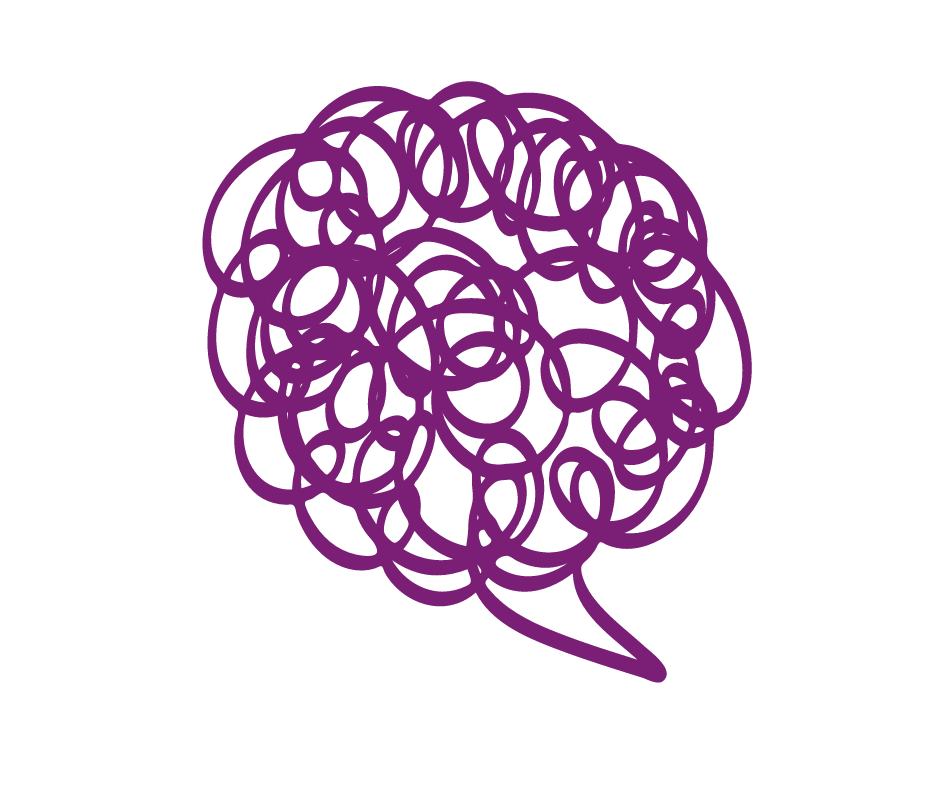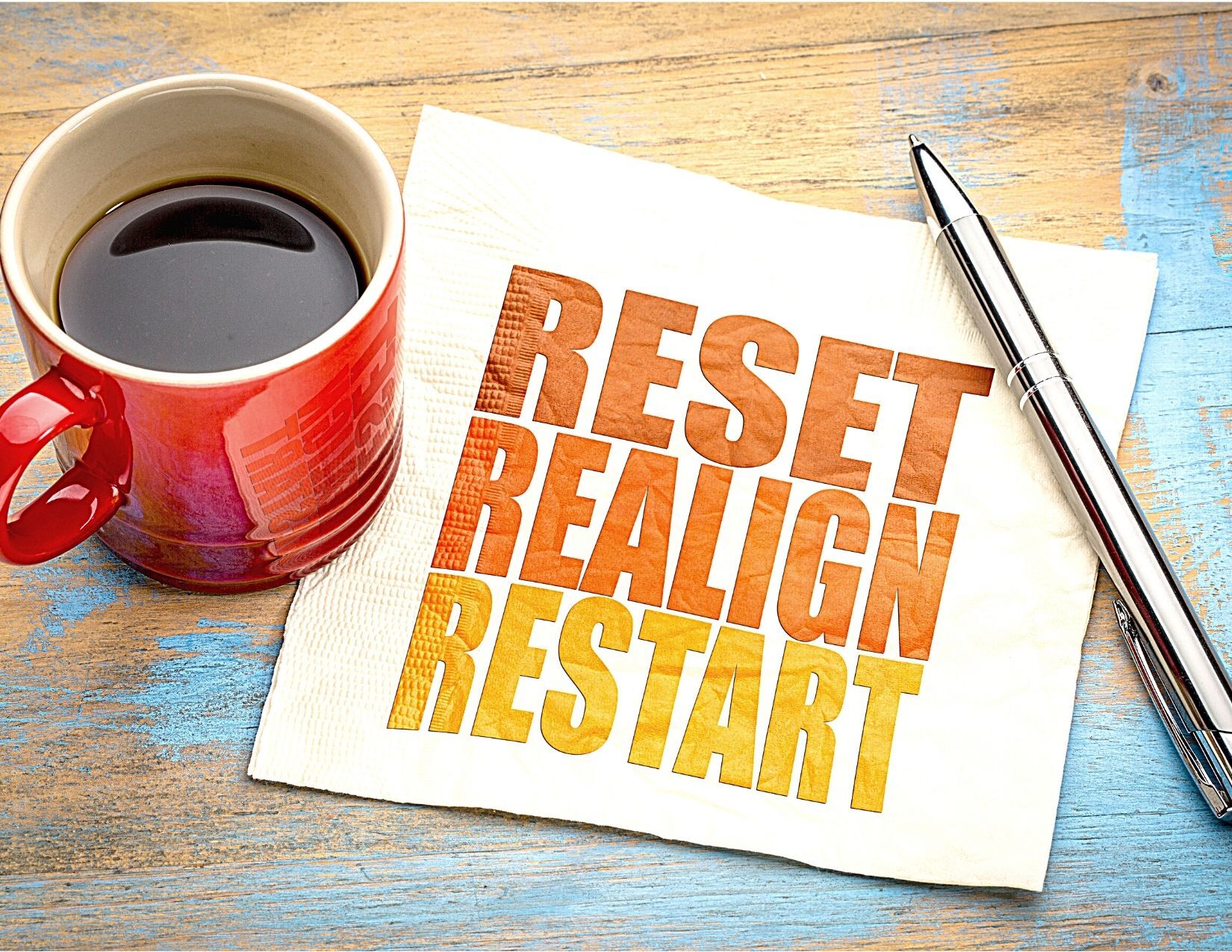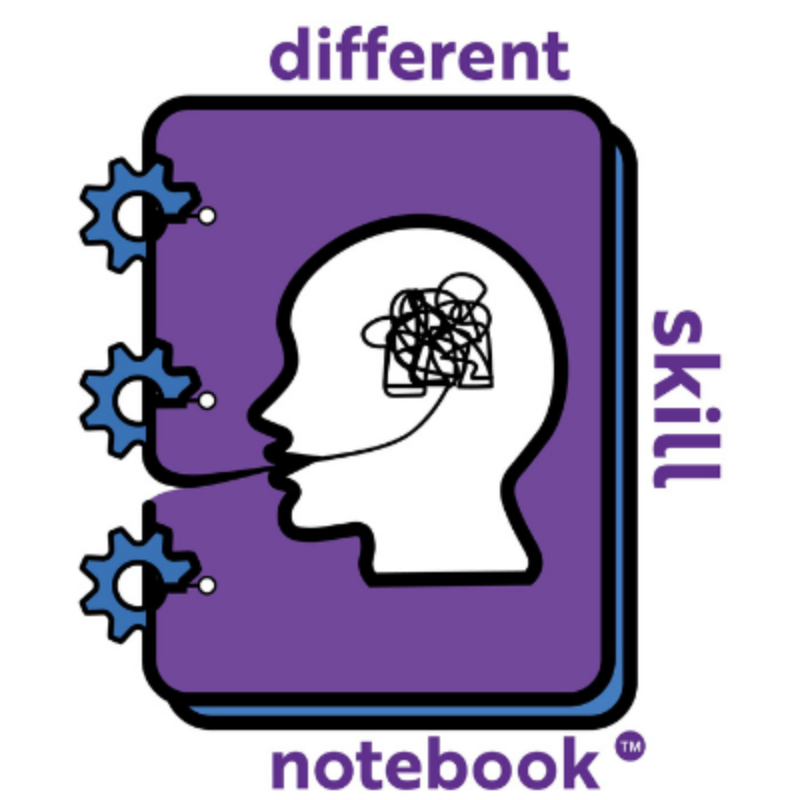
1.7K
Downloads
33
Episodes
The Social Mind Center presents the ”different skill notebook” a tool that provides strategies to build social-emotional skills resulting in social competency. Since March our world has experienced many changes with the COVID pandemic. Change is the new constant in our daily lives. Requiring us to be adaptable and adjust to the changes daily. The different skill notebook is a life curriculum for you to equip your child with the skills to communicate, connect, and build relationships for life. We want our children to have success beyond academics by acquiring skills to adapt, cope, self-manage and find purpose in life.
Episodes

Monday Jun 13, 2022
Managing Teen Anxiety in High School
Monday Jun 13, 2022
Monday Jun 13, 2022
Teen Anxiety in High School
Podcast Episode Summary:
Over the last couple of years, there has been an increase in teenage anxiety and depression. Personally, we have seen the impact of this increase at the Center. After seeing so many children and teens struggling with anxiety it is critical to prioritize:
-
Listening to a child or teen
-
Understand all their needs
-
Ensure that they have the words to communicate thoughts and emotions
Anxiety: is a feeling of worry, nervousness, or unease, typically about an imminent event or something with an uncertain outcome.
We all have anxiety at different times in our lives for different reasons. Anxiety is a normal response. When anxiety impacts one’s ability to perform daily life tasks and activities this is outside the healthy range.
Nick shares on the different skill podcast his experience with anxiety during his transition to high school.
Story:
When did you notice anxiety was impacting your quality of life?
In my Freshman year of high school, I started at a new school. I had spent the last 8 years in a small elementary and middle school Bethany Christian School. My graduating middle school class was 20 kids. I was entering a freshman class of 200 students. I was very concerned with fitting in and making new friends. Two of my friends came with me to Calvary which provided some ease and needed support.
I really wanted to succeed socially but my anxiety would stop me from meeting people. The anxiety was impacting my quality of life. I was constantly overthinking just saying hi to peers. I would be nervous and uneasy. I would wonder how I looked to other people. I would stay in this loop overthinking the interaction till I froze.

What did you do first?
I got tired of freezing up and not taking action. I wanted to meet people and have a successful social life. I decided to start to take small steps by:
· Identify different ways that I could meet people
-
joined track team: teams and clubs make the school smaller
· Approach peers that were in my classes
· Challenge myself to go up to someone new at lunch and sit with them
How would you avoid the overthinking loop that led to freeze mode?
-
Focus on acting vs. thinking
-
small steps
-
-
Positive self-talk

What else did you do?
Share my struggle with my family. Sharing makes you feel better and you discover you are not the only one that is struggling. Sought advice from my older sister. She struggled with anxiety all throughout elementary school and high school freshman year was a big transition for her as well. Gaby inspired me she was courageous and would go to school social events on her own. Gaby was solution-focused she would make a plan and then act. Her approach was small steps as well.
One of my classes was strength and conditioning. This class ignited my interest in weightlifting. In middle school, I boxed and did calisthenics. Boxing was an outlet for my stress and anxiety. With this new level of stress and anxiety, I needed something more intense. The weightlifting really helped me cope and release the stress. It also built my confidence and improve my physical appearance. The gym at my school was also a very social place, I was able to make new friends with shared interests.

Thursday May 26, 2022
Is it Non-Compliance or inability to Self-Regulate?
Thursday May 26, 2022
Thursday May 26, 2022
Is it Non-Compliance or inability to Self-Regulate?
In the last two months, I may have had more than two or three dozen conversations where parents share that they are getting notes home from the teacher that their child is non-compliant. In most cases, the child or teen is avoiding the task they are being asked to complete. It has always been my belief that no child wants to fail. There is always a reason for the behavior so finding the reason is important.
With an autistic child, the question should always be what is the skill needed to complete the task and do they have this skill. The mindset should be a skill gap leads to task avoidance. Task initiation, avoidance, completion, and endurance all fall under the skill set of self-regulation. Autism impacts self-regulation and the gravity varies depending on the child’s autism profile. This impact results in skill gaps in the executive function which is the mental processes that are involved in managing oneself. In autism self-regulation and self-management will require support to organize their mind and bodies to complete tasks. The question to ask when there is task avoidance: what tool, strategy, resource or support does the child need to be more constructive? Not how do we manage the behavior?
Self -regulation is a process internal to one’s self that involves “controlling one’s behavior, emotions and the thoughts in pursuit of long term goals. Self-regulation is the core aspect of adaptive behavior-meaning adjusting to the situation. Executive Function is a set of mental processes that have to do with managing oneself and one's resources in order to achieve a goal and involves mental control and self-regulation
In the last few years, we have really placed an enormous emphasis on behaviors in autism. To the detriment of identifying the skill deficit that results in this behavior. The most common behaviors that are identified by a teacher for an autistic child are:
-
BIG SKILL: underlying all these other skills is language acquisition (what words mean and how to put them together), for example asking for help, or a break when needed
-
BEHAVIOR: does not transition from one task/activity to another
-
SKILL: focus/attention, impulse control, cognitive flexibility
-
BEHAVIOR: does not follow directions
-
SKILL: attention, focus, listening, language processing and comprehension, working memory, impulse control
-
BEHAVIOR: unable to get started independently or does not want to do work
-
SKILL: initiate task -getting started independently requires sustained attention, impulse control (block distracting thoughts), and cognitive flexibility
-
BEHAVIOR: not staying on task, scattered attention, getting up or distracted from the task with other thoughts
-
SKILL: staying on task requires sustained attention, impulse control, and cognitive flexibility (shift attention back)
-
BEHAVIOR: not completing work or tasks
-
SKILL: task completion/finishing requires staying on task, sustained attention, impulse control, and cognitive flexibility (shift attention back) skills
Story:
Both of my kids have an incredibly unique and diverse learning style. When it comes to their ability to self-manage/self-regulate they are polar opposites. We all have unique ways to get goals accomplished. Self-regulation is goal-driven behavior. There are many skills involved in accomplishing goals.
My son was under-responsive to his environment. What that means is he had difficulty getting his mind and body organized to tackle the day.
Each child on the autism spectrum uniquely navigates their daily differently depending on their needs. They all need support with self-regulation/self-management because autism impacts self-regulation. So the inability to initiate or get started is not always behavior.
The level of difficulty in self-regulating is impacted in autism by the level of deficit in:
-
social communication,
-
the inflexibility of behavior,
-
difficulty coping with change,
-
or other restricted/repetitive behaviors .
In my son’s case, his social communication was greatly impacted at a young age, however, there was not a high level of inflexibility, coping with change, and/or restricted or repetitive behaviors. There may be several explanations for this but due to him being non-verbal we provided tools and supports that possibly allowed more flexibility in dealing with change very early in the diagnosis. We implemented the visual schedule and communication system PECS at 2 years old. This made his daily life predictable and consistent.
Since Nick was really not one to engage his environment we set up a routine that would promote engagement. He was a good baby and toddler he stayed where you left him. So much of our intervention was increased exposure and experience exploring the world. I viewed them as guided interactions and I was the tour guide. We engaged him frequently and consistently we did not allow him to be zoned out in his own world for too long.
There are children that are over-responsive to their environment and we can characterize them as extremely active and engaging their environment not always appropriately.
With this profile, the focus would be on activities and strategies to increase focus, calming, coping, and exercise. The over-responsive child can struggle in an academic environment where you are expected to stay seated for long periods of time. Sensory integration difficulties can make a child over-responsive since they are seeking to feed their sensory needs. Meeting these needs with a daily sensory diet is important to help bring balance to the child's mind and body. Ignoring sensory needs will lead to behaviors that can be managed.
In both scenarios over-responsive or under-responsive, what is important to know and understand is that the regulation/organization will need to come from the outside in for our autistic children.
The level of support will vary depending on their level of dysregulation. Why is this so important? Dysregulation is the first thing that is seen, typically called behaviors. Why do I not call it behaviors because everything in autism is not a behavior although it may appear that way to so many?
What presents as behaviors is an autistic person attempting to navigate their surroundings with no tools.
My son’s toolbox was extensive. Since he was not able to communicate substantially till age 4 we started with PECS at age 2 and continued with a communication device. We also invested much time in teaching him to meet his own needs. His intervention plan prioritized language development, communication, and independent function over all other interventions. The communication tools made his world more organized, and predictable as well as outline social expectations. They also repeated the language for him that applied to that situation. It gave him the order he needed to proceed and explore the world more safely.
Skill: Self-Regulation
Self -regulation is a process internal to one’s self that involves “controlling one’s behavior, emotions and the thoughts in pursuit of long term goals.
Promoting self-managing in autism requires focusing on building independent functioning skills. This requires intervention planning that prioritizes these skills over academic instruction. It is critical in autism that the child can navigate their classroom or any environment as independently as possible.
Initiating a task and completing a task independently is more important than advanced academics. Having an advanced reading level is great however, if the child cannot read independently. With autism know how to do a task is just as important as doing task independently.
Strategy:
Providing a support system to help the child organize, manage sensory needs and engage. This is a toolbox that will evolve with your child’s development. Having an autistic mind means that you learn differently so you must have the tools to support this learning style. The expectation cannot be that the child will develop a skill independently without instruction or support.
The expectation that a child with autism will self-manage independently continuously and consistently without organizational tools and strategies is the same as you expecting to navigate your day without your smartphone, laptop, or planner.
-
Thinking tools!
-
schedule: provide a structured learning environment that is predictable with advance notice
-
visual schedule, checklists, and reminders in lieu of verbal prompting
-
additional time makes the world of difference for a child that is trying to organize their mind and body continuously
-
providing additional time for transitions
-
providing additional time for initiation of task
-
-
written instructions or steps for tasks that are difficult such as writing or reading comprehension that require the child to generate and organize language
-
story maps - outlines the story
-
writing prompts to get started on an essay
-
reading and writing tasks are split into sections/steps
-
-
work folder - organize tasks
-
breaks - a child with autism uses their brain for social, emotional, and academic so frequently there is mental exhaustion incorporating movement, sensory or quiet space breaks can restore focus and endurance
-
-
Build
To build self-management skills it’s critical to use the same systems, strategies, and tools consistently. Secondly, use the same systems, strategies, and tools across environments. The goal is to build independence and help your child to manage their own needs. The biggest challenge in setting up these systems is that you need to self-organize to sustain a home environment that can follow the system that you set up. Consistency is the hardest for families for obvious reasons.
Better to teach one skill consistently than teach 10 skills inconsistently. The autism learning style requires varied repetition. Not just repeating the task in the same way but varied ways to also increase the mental flexibility.
Works Cited:
American Psychiatric Association. (2013). Diagnostic and statistical manual of mental disorders (5th ed.).
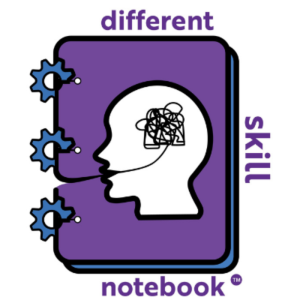
Tuesday Feb 01, 2022
Implementing Structure & Routine to Promote Independence
Tuesday Feb 01, 2022
Tuesday Feb 01, 2022
Please Welcome! Cynthia Tobar shares with us the structure and routines that she has implemented in their daily lives to help Jackson, her son, build self-regulation/management skills.
Self -regulation is a process internal to one’s self that involves “controlling one’s behavior, emotions and the thoughts in pursuit of long term goals. Self-regulation is the core aspect of adaptive behavior-meaning adjusting to the situation. Executive Function is a set of mental processes that have to do with managing oneself and one's resources in order to achieve a goal and involves mental control and self-regulation
Self-regulation is the result of executive function skills working together. Working memory, cognitive flexibility, and inhibitory control work together to help us self-manage.
A significant fact is that we are not born with these skills; we acquire them incrementally over time. Some experiences and conditions can impact the development of these skills. For example, those on the autism spectrum, ADHD, learning disabilities, and early childhood neglect or trauma have difficulty acquiring these skills. The individual may experience different challenges with either flexibility, working memory, or impulse control. No matter the condition or learning differences, the child can learn these skills. Some children may require different instructional strategies and additional tools; however, systems can be in place to equip them with these skills.
As essential as they are, we aren’t born with the skills that enable us to control impulses, make plans, and stay focused. We are born with the potential to develop these capacities—or not—depending on our experiences during infancy, throughout childhood, and into adolescence. Our genes provide the blueprint, but the early environments in which children live leave a lasting signature on those genes. !
Center on the Developing Child at Harvard University (2011). Building the Brain’s “Air Traffic Control” System: How Early Experiences Shape the Development of Executive Function: Working Paper No. 11. Retrieved from www.developingchild.harvard.edu.
Some children require that systems be implemented to promote self-regulate/manage more effectively. Join us as we will explore strategies to build self-regulation for independent living.
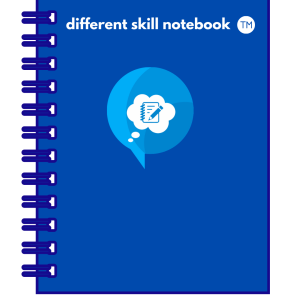
Friday Jan 28, 2022
The Skills Behind Independent Living
Friday Jan 28, 2022
Friday Jan 28, 2022
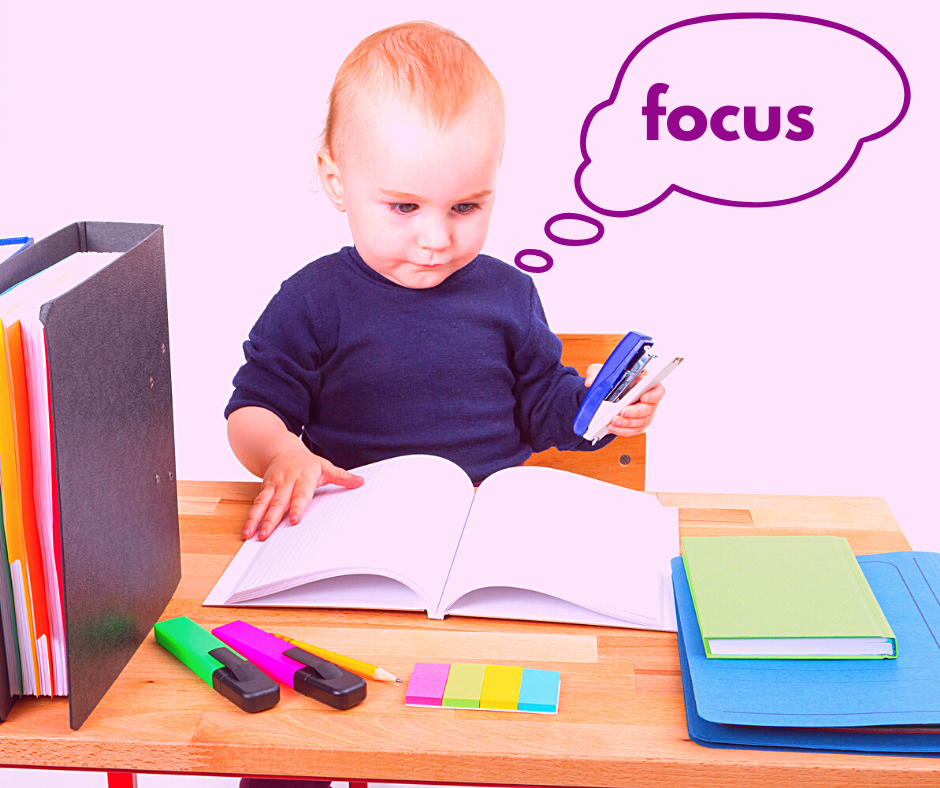
Self -regulation is a process internal to one’s self that involves “controlling one’s behavior, emotions and the thoughts in pursuit of long term goals
What are the skills behind successful learning in and out of a school environment?
Self -regulation is a process internal to one’s self that involves “controlling one’s behavior, emotions and the thoughts in pursuit of long term goals. Self-regulation is the core aspect of adaptive behavior-meaning adjusting to the situation. Executive Function is a set of mental processes that have to do with managing oneself and one's resources in order to achieve a goal and involves mental control and self-regulation
Self-regulation is the result of executive function skills working together. Working memory, cognitive flexibility, and inhibitory control work together to help us self-manage.
A significant fact to know is that we are not born with these skills; we acquire them incrementally over time. Some experiences and conditions can impact the development of these skills. For example, those on the autism spectrum, ADHD, learning disabilities, and early childhood neglect or trauma have difficulty acquiring these skills. The individual may experience different challenges with either flexibility, working memory, or impulse control. No matter the condition or learning differences, the child can learn these skills. Some children may require different instructional strategies and additional tools; however, systems can be in place to equip them with these skills.
As essential as they are, we aren’t born with the skills that enable us to control impulses, make plans, and stay focused. We are born with the potential to develop these capacities—or not—depending on our experiences during infancy, throughout childhood, and into adolescence. Our genes provide the blueprint, but the early environments in which children live leave a lasting signature on those genes. !
Center on the Developing Child at Harvard University (2011). Building the Brain’s “Air Traffic Control” System: How Early Experiences Shape the Development of Executive Function: Working Paper No. 11. Retrieved from www.developingchild.harvard.edu.
In this post, we will focus on identifying and defining these skills. Several future posts will cover instructional strategies and tools to teach self-regulation skills.
You can find the rest of the post on our different skill notebook blog at
https://www.socialmindcenter.com/differentskillnotebook-1/2022/1/3/self-regulation
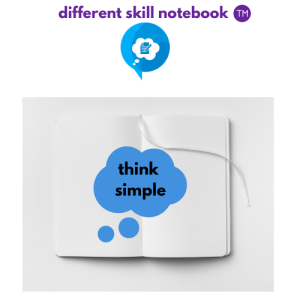
Thursday Nov 18, 2021
The Freeze: Anxiety in Classroom
Thursday Nov 18, 2021
Thursday Nov 18, 2021
FREEZE: ANXIETY IN THE CLASSROOM

We have all played the freeze game. When the music stops playing you remain still (Freeze) in place. The person who moves is out of the game. It has been approximately 9 weeks since school started and in this time we have had a common thread in many calls from our families’ teachers claiming non-compliance during certain sessions during the school day. The teacher claims that they have tried everything and the child is still refusing to work.
One of the amazingly enlightening experiences for me is having the opportunity to meet so many children with varying learning differences and work with their families. We have the opportunity to spend extended periods of time with them and observer them in stressful situations. We frequently witness the freeze we interpret as means of coping with information overload and/or anxiety regarding demands placed outside of their skill set. Children with anxiety and sensory integration challenges can freeze when presented with a task that is unfamiliar or difficult for them.
The most common call we have had in the last two months is our parents sharing that their child’s teacher contacted them to notify them that their child is non-compliant and refusing to work. Additionally, the teacher will state that they have tried everything and they still refuse to work.
On our end, we do not refer to this response to certain tasks as non-compliance. We prefer the term task avoidance. A child or teen that has an Individual Education Plan (IEP) has learning differences that impact their performance at school. With this advance notice, there cannot be an expectation that this child will perform at the same pace or ease as peers without IEP’s. The intent of an IEP is that the child will be provided with the tools, resources, and instruction to bridge the skills gaps resulting from the learning difference. The teacher should be aware that this child’s performance will vary initially till some of these skill gaps can be bridged.
So at the beginning of the school year after a pandemic with many children being out of school for a significant amount of time children with IEP’s should have additional time allotted for adaptatie.
When there is an IEP in place the progress of this child should be based on skill acquisition based on their individualized goals as outlined in their individual education plan. Their performance should never be compared to a neurotypical peer.
So in this article, I want to discuss the situation of anxiety in the classroom and how that can often look like a child is frozen. When the child remains still it appears as if they are refusing to work. When a child is not performing the question to ask oneself is where is the skill gap or what is the skill needed. Then the next step is what strategy that can help the child overcome the anxiety they are experiencing in relation to these tasks. We very often when seeing this freeze reaction there is a demand placed that is outside the child’s ability.
Skill: Defrost
Strategy: Reduce pace and task

So when working with a child with anxiety it is so important to know that when the anxiety is high and they are not performing this is not a time to press forward and insist. The response should be to pause and allow some time for them to adjust to the situation. Give them a few minutes and perhaps allow an opportunity to go to the bathroom splash some water on the face or break for a few minutes.
-
Pause - allow a few minutes.
-
After a pause and consider minimizing the task. However, prior to minimizing the task repeat directions and do one problem with the child (sample). If it is a writing assignment get them started with a writing prompt. For example, write out the first sentence.
-
When children have self-regulation challenges they have a difficult time organizing their mind and body to start a task. Giving them additional time and a sampling of the work can help them get started. Also, assuring them that if they are not certain what they need to do they can ask for help. This is a model for self-advocacy.
-
-
Depending on the child’s IEP they may require additional instruction or a visual checklist (to-do list) to self-initiate and work toward building task endurance. Some children struggle with attention and language processing therefore they require more direction. I prefer a checklist so the teacher does not have to repeat themselves and it promotes independence.
Build: coping skills to defrost
Allowing time to defrost and settle into new routines and expectations. Some children take longer to adjust to new routines. When implementing any strategy note it should be consistently used for several weeks to know if is effective. In our experience anxiety is experienced when there is an independent working task involving writing or a long worksheet. It truly depends on the child’s learning difference. In our experience children with focus/attention struggle to stay on task for long periods and require task endurance to be built up in increments. Children with language deficits including those with autism take a longer time to process language and directions. For tasks suck as writing requiring generating and organizing language, you may witness task avoidance.
Tools: create task endurance and focus
-
checklists
-
highlight instructions and areas to be completed
-
choose either odd and even numbers of problems to reduce the length of the worksheet
-
first and then visual (could be post-it note separating task in two)
-
folder with one pocket labeling one side to do and finished
When students struggle with self-regulation it impacts their ability to organize and initiate tasks visuals such as checklists, folders and breaking down tasks into steps increases task endurance.


Saturday Oct 02, 2021
Kindergarten Readiness -Independent Navigation of Environment
Saturday Oct 02, 2021
Saturday Oct 02, 2021
Kindergarten Readiness - Independent Navigation of Environment
When our children are babies and toddlers, we do so much for them. They require so much attending and care since they are too young to do and care for themselves. As parents, we often see them as more dependant than we should. There is so much a two-year-old can learn to navigate their environment independently. It is at the age of two that we as parents can encourage independence and self-care. Children are starting school earlier now, either at two or three years old. They are exposed to and learn so much quicker. Their brains are sponges. Most children want to do it for themselves. Some may need additional modeling and practice, but the earlier you start, the quicker they will adapt. It’s important to remember as a parent that we are not raising our kids for us; we are raising them to go out into the world.
Three critical words to know and apply in teaching pre-schoolers
consistency, structure and repetition.
Kindergarten has changed considerably over the last few decades. There are expectations for social, emotional, and behavioral skills in Kindergarten beyond academics. The increase in expectations is due to children attending pre-school earlier and acquiring academic and social skills in pre-school. To navigate the current kindergarten curriculum, children are expected to have a certain level of independence.
Teachers are required to cover more curriculum with less playtime. There are more tasks and swift transitions required throughout the day. Kindergarten is more serious now, requiring a different level of performance. To ensure your child’s success fostering independence in self-care, communication, self-regulation, and tasks are necessary. Of course, it is an asset if your child knows their letters, recognizes words, colors, shapes, and writes. All the skills below can be developed and encouraged in your home by allowing your child to take a more active role in meeting their own needs and helping the family.
The following skills are for independent navigation of the classroom:
-
Takes responsibility for belongings. Unpacks and packs up (lunch box, backpack, jacket).
-
Able to dress self
-
-
Transitions to different activities and tasks throughout the day and adjusts to the situation.
-
Attend to an activity/task for at least 10 minutes and stay with the activity or task to completion.
-
Uses words to solve problems or conflicts.
-
Asks for help and asks questions when uncertain what to do.
-
Follow one and two-step oral directions.
-
Talks in sentences and uses sentences that include two or more ideas.
-
Waits turn to play with toys or games.
-
Tries to regulate emotions properly and articulates feelings in words. Demonstrates increasing self-control.
-
Works cooperatively (listens to others, shares and take turns).
All these skills fall into these skill categories:
-
Attention and awareness
-
listening
-
-
Social communication skills are the use of language in social contexts. It encompasses social interaction, social cognition, pragmatics, and language processing.
-
Self-control/self-management
-
cognitive flexibility
-
self-care
-
Visit our site for the complete article www.socialmindcenter.com

Monday Jun 14, 2021
Critical Skill of Coping and Self-Care
Monday Jun 14, 2021
Monday Jun 14, 2021
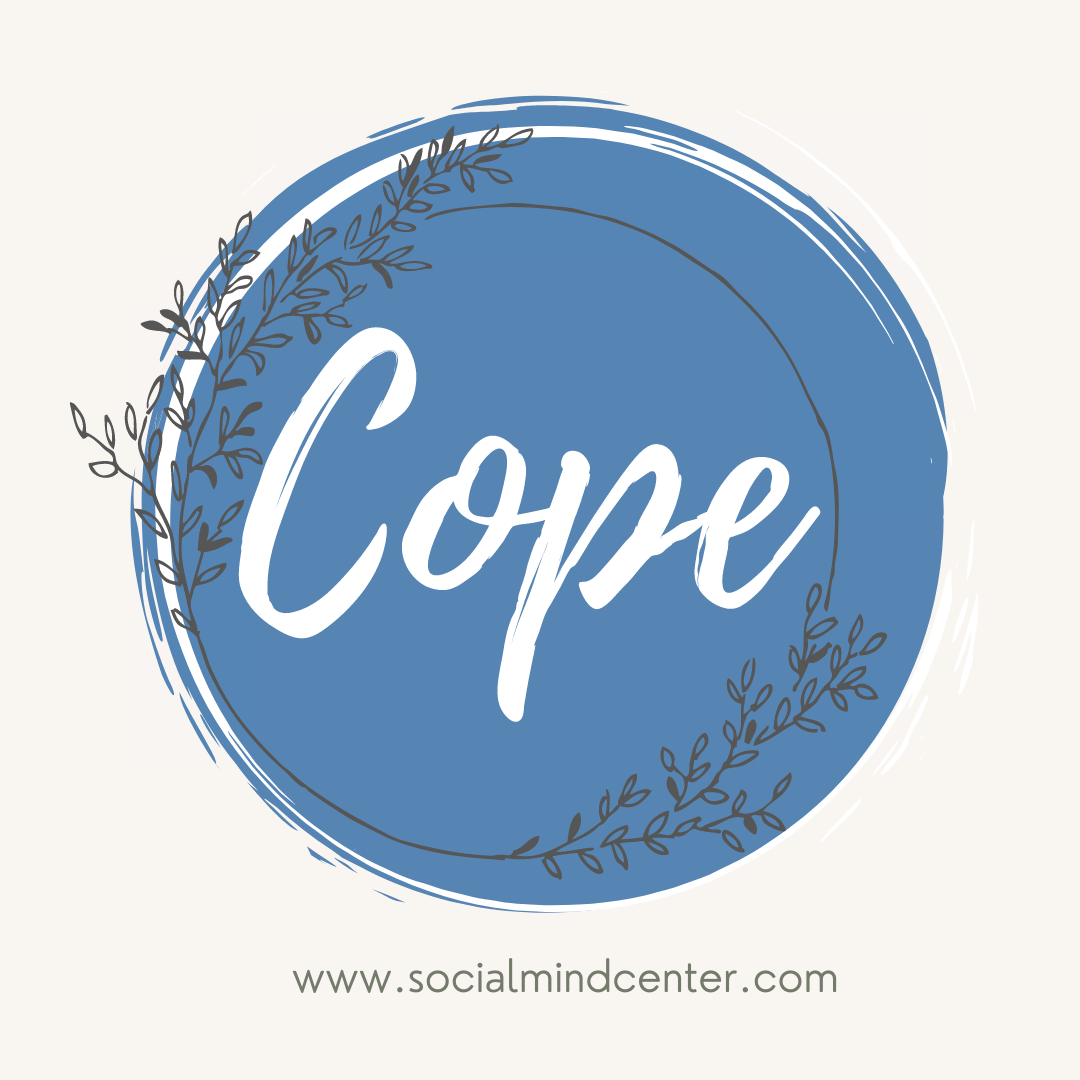
This episode will kick off a series focusing on building coping skills focusing on coping with anxiety. Coping is a skill that is critical when things do not go as expected. This past year there has been a considerable increase in anxiety in children. Since the start of this year, most of my consults have been related to anxiety. Many of the children have debilitating anxiety. We have all been dealing with much stress and loss. The most challenging aspect of the pandemic is the level of uncertainty and the disruption of our daily routines. The tension and changes have persisted for a year. This has lead to COVID fatigue. For all of us, structure and routines make us feel secure in uncertain times. To compensate for his uncertainty we must focus on the aspects of our days that we can control and provide a system and practices that can reduce the stressors we cannot control. After a long day of uncertainty and change, we need to focus on coping and self-care routines that include new thinking skills to counteract the stress and anxiety-provoking thinking.
Story:
For my family and me, anxiety has always been a rather giant monster living in our home. There are different levels of anxiety, and we have always dealt with moderate to severe levels. Some people are just wired to worry. We have always invested much time in building coping skills and self-care routines to proactively manage anxiety. COVID really escalated the need for more consistent and frequent self-care. The pandemic started in my daughter's senior year and first year of college. Her college is in Manhattan; she is still attending online classes. The uncertainty of when she will be able to return to the school campus is very stressful. The drastic and continual changes at schools is a source of great stress. Now many are returning to school; however, there are changes in teachers, curriculum and friendships. Most of my son's friends were not able to return to the same school.
We can agree that it has been too much change and loss in a short period. We cannot disregard the impact that this has had on all of us. We must take time to recuperate from COVID fatigue. We must also acknowledge the mental, emotional and physical impact of this pandemic. We are all weary and worn out from the pandemic.
Our coping and self-care must be equivalent to the level of anxiety we are experiencing.
When things get stressful in our home the first strategy that we do is:
-
Stop/halt and redirect ourselves to a self-care/soothing activity.
-
Our top strategy is a change of scenery is a change of mindset.
My son Nick has always understood his need for pacing himself and not overscheduling. His daily schedule has exercise and resting incorporated with his required tasks. When he was a toddler his favorite word was break. He has taught me the importance of pace and how slowing the pace is required sometimes. Slow and steady is his process. His pace was his form of coping. Reducing one’s pace will immediately reduce your stress. I hear parents so often being so hard on themselves and placing strenuous expectations on themselves. What all our kids need most is love and attention the rest is extra. There are so many of our expectations that can be edited or eliminated and some require more time to be accomplished. Our impatience is a great source of stress as well. My son is thriving in high school in 11th grade and my daughter is thriving in her first year of college. Prior to this, it was a climb with many obstacles and barriers that needed to be overcome. Some children may take their time and there is nothing wrong with that it just makes pacing ourselves as parents even more important. Our mental health is critical as it will directly impact our children. We must model coping.
If you find that you or your child are consistently struggling with moderate to severe anxiety, consider seeing a professional for guidance. Consistent heightened levels of anxiety lead to depletion that can lead to mental exhaustion making it challenging to implement coping strategies and shift from anxious thoughts. Anxiety also makes our thinking cloudy and disorganized making it challenging to redirect thoughts causing us to stay in the negative thinking loop. You or your child may require assistance to get out of the anxiety loop.
Consider cognitive-based therapies as an effective treatment for anxiety. Cognitive behavior therapy is a type of psychotherapy. This form of therapy modifies thought patterns in order to change moods and behaviors. It’s based on the idea that negative actions or feelings are the result of current distorted beliefs or thoughts.
Skill:
Coping is to deal effectively with something difficult.
The anecdote for anxiety is coping.
Coping allows us to adapt so we can evolve emotionally and socially. This past year we learned that becoming comfortable with discomfort can be a valuable skill. As parents, we want to save our kids from their struggles. It is hard to watch them struggle and suffer. Rescuing does not teach them how to cope or resolve. The anecdote for anxiety is coping. Rather than resorting to rescuing, consider building coping, self-care and thinking skills to self-manage anxiety. One important coping strategy is learning to calm ourselves. For children who may have emotional regulation issues reaching a calm state may take practice and assistance. We all need to practice the coping strategy of reaching a calm state of mind and body. What we can learn from this pandemic is that our lives can drastically change at any time. This has given us an unusual opportunity to learn to cope with change and discomfort by proactively practicing calming strategies throughout our days. Inserting breaks into our days of quiet and soothing actions. In these technological times that requires shutting down to reboot.
Strategy:
An essential aspect of coping is self-care. We must be kind and patient with ourselves. We have all experienced loss during this time. We need to take this imposed societal shut down to allow time for healing and recuperating rather than seeking replacement activities to liken our previous routine. This is an opportunity to evaluate our former ways and reset. These are times to include new healthy habits that will promote balance in our life. The balance will minimize stress and worry. We often cannot control our circumstances, but we can control how we respond.
Present, and Pace:
-
-
Stay in the present and tackle tasks one at a time. One hour at a time. Multi-tasking sounds great. It is not always the most productive.
-
Mind your pace; maybe you need a slower pace:
-
When listing you’re to do’s, make sure you examine what does not need to be done. Sometimes our to-do lists are wish lists. It stressful edit to the must do’s.
-
-
Focus on the information that is available and accessible to you at this time; avoid hypotheticals; if you are struggling with getting through the day, why think about next week. Stay in the moment!
-
Reaching a calm state of mind requires shutting down the thinking process and soothing our bodies. For some, being still comes easy. Some need movement to calm the body. This may also require the changing of place.
-
Movement of the body and moving places/scenery moves mind:
-
-
My motto is a change of scenery change of mindset. I believe nature to have healing power. If you cannot take a nature walk, then watch the national geographic channel, the world of calm or any nature/travel programming to provide you with a visual and mental escape from your current surroundings. You can combine it with walking in place or stretching.
-
music can also alter one’s mindset
-
yoga and stretching
-
there are many apps available now that provide you with positivity, meditation and visualizations to shift your mindset.
-
-
Include exercise daily:
-
incorporate subtle and intense movement in your day
-
games that require action
-
-
-
Play:
-
-
Children and teens are overscheduled today. So much of the activities they are involved in are performance-based and monitored. Rather than activities to provide an outlet and for self-expression. Children that are online schooling need more play and non-screen time activities. Play can lighten the mood and bring silliness which is always needed.
-
Playing games teaches critical social competency skills in areas of social language, perspective-taking and executive function including:
-
words to resolve conflict
-
words to seek assistance
-
Sharing space
-
Listening
-
Cooperating
-
Making tough choices
-
Being a good sport - Thinking of Others
-
Bonding
-
Social attention
-
Transitions
-
Waiting
-
Focusing/staying on task
-
Flexibility
-
Emotional regulation
-
Following directions
-
Sequencing
-
-
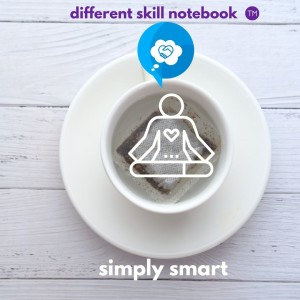
Wednesday Apr 14, 2021
Taming the Anxiety Monster
Wednesday Apr 14, 2021
Wednesday Apr 14, 2021


What is Anxiety?
-
worry
-
nervousness
-
unease
Signs of Anxiety:
restless, nervous, tense, sense of danger, panic, doom, increased heart rate, breathing rapidly, sweating, trembling, weak, tired, trouble concentrating or thinking about anything other than present worry, trouble sleeping, gastrointestinal problems.


Strategy:
Affirm:
-
-
Validate the feelings of stress and worry.
-
I always tell my children I am so sorry that you are going through this how can I help.
-
-
Provide assurance that you understand as you have been stressed and worried as well. Empathize and share how uncomfortable it is to feel this way.
-
Provide an encouraging, comfortable and supportive setting so they can share the concerns. Provide examples in case they may not have the words to communicate the worry. You can share stories that may exemplify a similar worry for them to identify with.
-
You need to discuss with your child that you understand their fears because everyone has fears that they need to cope with. Model how you cope. You may not know the exact coping strategy however, authenticity and transparency are the best. You do not need to know all the answers just reassure them that together you will figure things out and find a solution.
-
Access:
-
-
Gather as much information as possible of what is leading to worry?
-
Measure the seriousness by examining frequency and intensity. Is it every day, and does the worrying last for long periods. Do you see mental and emotional depletion (exhaustion or frequently tired)?
-
Here is a worksheet that can help you track the anxiety. These worksheets can be found on www.understood.org. The specific URL:https://www.understood.org/en/friends-feelings/managing-feelings/stress-anxiety/download-anxiety-log-to-find-out-why-your-child-gets-anxious-or-stressed.
-
-
Action:
-
-
Provide clarification; often, excessive anxiety can be based on insufficient or inaccurate information. It can also be distorted thinking? Distorted thinking is when we misinterpret a situation as awful and a threat to our well-being when in reality it is not. Because our thoughts generate emotions, and our emotions cause reactions, distortions in our thinking can lead us into an undesirable reaction.
-
Answer questions or concerns?
-
Encourage rest and quiet.
-
Limit exposure to news or negative scenarios that may increase worry. Make sure they have accurate information about the pandemic. Add to your social media feeds that are positive, empowering and encouraging information.
-
Anxiety Tracking & Pattern:
-
Tracking the pattern will provide clues as to what may cause anxiety.
-
Identify signs of when the anxiety is starting or increasing.
-
Anxiety impacts our mental clarity and communication. Your child may have difficulty pinpointing the source of anxiety or making sense of what is happening. Tracking and identifying a pattern can reveal information that the child or teen may not be able to communicate.
Resources:
-
-
Brown, Annette F. Live Strong.com, What Are Different Levels of Anxiety. https://www.livestrong.com/article/97139-different-levels-anxiety/
-
These worksheets can be found on www.understood.org. The specific URL:https://www.understood.org/en/friends-feelings/managing-feelings/stress-anxiety/download-anxiety-log-to-find-out-why-your-child-
-



Thank you for listening to different skill notebook podcast for article to complement the podcast please visit www.socialmindcenter.com/parentconnectionblog/differentskillnotebook
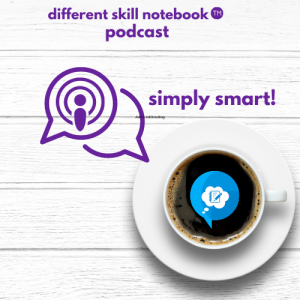
Monday Apr 12, 2021
Restart Academic Mindset
Monday Apr 12, 2021
Monday Apr 12, 2021
This past year of the COVID pandemic disrupted the structure in our lives that provided security. School and work are part of our daily routines that brought us order and stability. COVID interrupted all lives, exposing us all to varying degrees of chaos and loss. Everyone has experienced some level of anxiety this past year. As parents, we want to press forward and get our children to learning and thriving. We are in a new year with new perspectives. With school shutdowns and home learning, we have seen a different side of the academics and our children’s process outside of the classroom. This is a time to reevaluate and reprioritize what is most important for our children. Mental, social and emotional health is just as or more important than academic success. One cannot be achieved at the expense of the other. Mental health must be acknowledged and prioritized. We must acknowledge that while our kids may be capable of doing certain things, does not mean they should do them. The increase in childhood anxiety is in part to the pressures that children today are exposed to unnecessarily. This is a time to evaluate and examine your parenting process and academic mindset. This is maybe a perfect time to reset your process.
Before COVID, I have always noticed from my conversations with parents that there seems to be an academic race. A huge part of the pressure is to be ahead. I have always said that I don’t know where everyone is headed. It takes 12 years to finish school. I have always been puzzled by advanced curriculums. And never really understood the benefits of being in a specific grade and working on a curriculum one or two grade levels above.
We are not allowing kids to learn at their pace.
We keep increasing the expectations without providing coping tools.
We are seeing a great increase in children having anxiety and mental health concerns. Typically, in summer, I see parents including academics in the summer day activities with the mindset of not wanting them to fall behind. I always encourage them that summer can be an opportunity to learn social-emotional and self-management skills that may be hard to focus on during the academic school year. There is also so much learning that different experiences, such as volunteering, can do.
Consider this summer allowing for plenty of time of leisure and rest. We need to acknowledge that the pandemic has left us all weary and fatigued. We need to have to time recuperate mentally, emotionally and physically.
As we press forward, let us note the residual effects of the past year that we all want to leave behind—keeping this in mind as some of our kids are returning to schools at different times. For so many kids, home learning was not successful, and there was a loss of skills. We must resist the anxiousness that can arise from the thought of our kids falling behind. There is plenty of time to learn we must dismiss this “falling behind” mindset; it’s unhealthy. This mindset pressures us to adopt an unbalanced pace. This Winter and Spring semester is a time for all of our kids to adjust and adapt to returning to school, still with a pandemic looming. Use this time to rethink your process and priorities before COVID. This is a time to press the restart button and have the opportunity to do things differently.
Reset: resist the pressure to dismiss COVID fatigue. Allow your child and yourself this later part of the academic year to adapt to the continued changes.
Realign: do not increase the pace or overschedule to compensate for the lost time. Allow for play and leisure time maintaining a balanced speed.
Restart: adjust your routines to incorporate healthy habits that may have been missing in your daily practice.
This past year we have been shown the importance of health. Without our health all else is impossible. There is still much to learn from this experience of this pandemic that can help us refresh our lives. We are still at the start of the year with the opportunity to reset.
What can help with this process is to make a list. Make a list of all that you would want more of this year on the yes column. Make a list of all that you would want to see or experience less of this year on the no column.
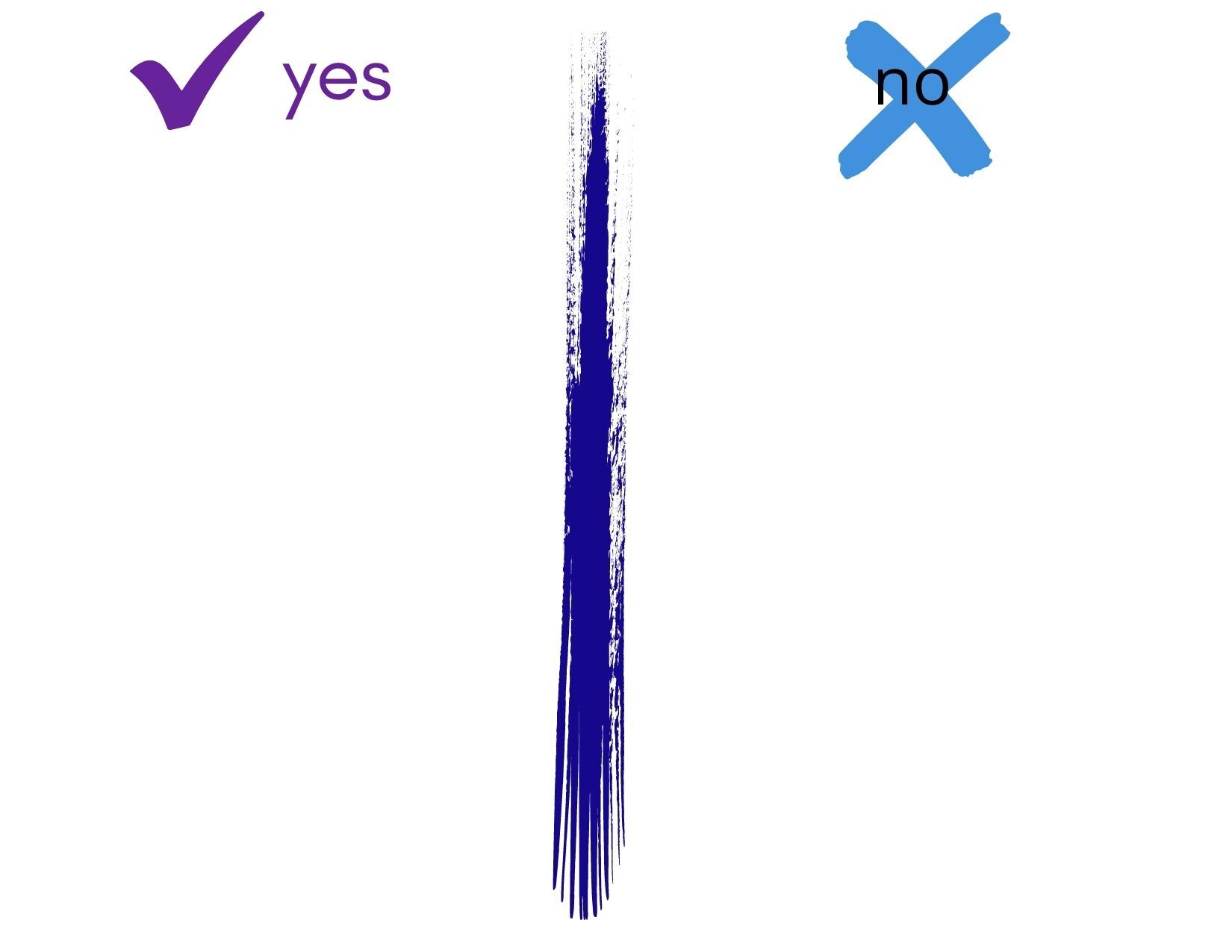
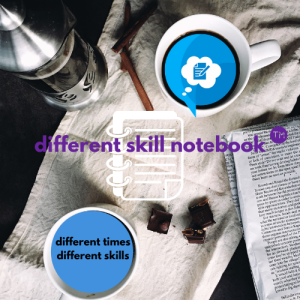
Tuesday Mar 02, 2021
Becoming Comfortable with Discomfort
Tuesday Mar 02, 2021
Tuesday Mar 02, 2021

Welcome to the different skill notebook podcast. In this episode, I share details of a consultation with a parent on coping skills.

Coping allows us to adapt so we can evolve emotionally and socially. This past year we learned that becoming comfortable with discomfort can be a valuable skill. We want to save our kids from their struggles however, this does not teach them how to deal with or resolve their struggles.
This past year, there has been a significant increase in anxiety for children. The anecdote for anxiety is a coping strategy.
You can contact me on www.socialmindcenter.com. Ana Anselma

